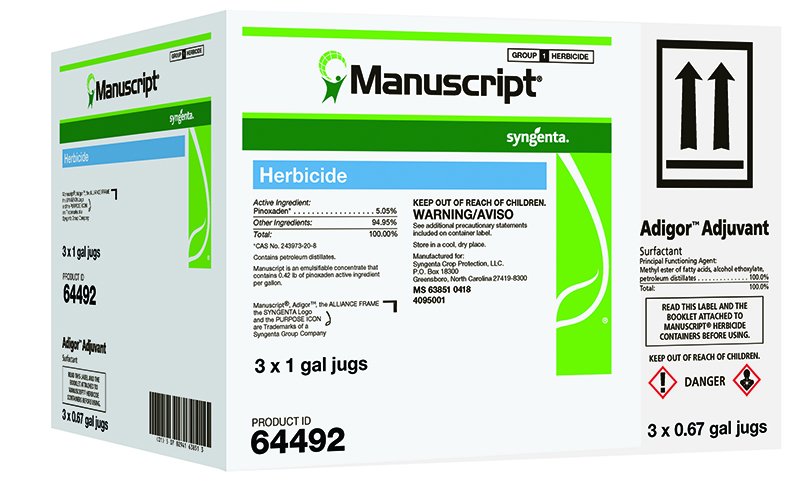Superintendents managing cool-season grasses have a new tool in their arsenal for post-emergent weed control.
The U.S. Environmental Protection Agency has expanded the label for Syngenta's Manuscript herbicide to include use on cool-season turf.
 Previously labeled for use on Bermudagrass and zoysiagrass and golf courses, sports fields and sod farms since it hit the market in 2018, Manuscript now is also approved for control of post-emergent weeds on fine fescue and Poa annua.
Previously labeled for use on Bermudagrass and zoysiagrass and golf courses, sports fields and sod farms since it hit the market in 2018, Manuscript now is also approved for control of post-emergent weeds on fine fescue and Poa annua.
With the active ingredient pinoxaden and formulated with a surfactant to maximize efficacy, Manuscript is labeled for control of a host of post-emergent weeds, including bahiagrass, dallisgrass, coastal sandbur, large crabgrass, smooth crabgrass, tropical signalgrass, tropical carpetgrass, kikuyugrass, paspalum, ryegrass and torpedograss.
Manuscript can be used anytime weeds are actively growing, including in the heat of the summer when desired turfgrass is actively growing and fills in more rapidly.
Manuscript is formulated with a built-in safener that speeds the metabolism of pinoxaden in desirable turf to help improve turf safety without sacrificing control of mature, difficult-to-control weeds. This allows for effective spot treatments, further improving selectivity against tough weeds.
Manuscript is packaged with Adigor surfactant from Syngenta, which is custom-built for use with the herbicide and maximizes the quantity and rate of absorption of pinoxaden, as well as the degree of translocation once pinoxaden is in the plant.
Manuscript should not be tank mixed with phenoxy herbicides, such as 2,4-D, which can compromise its efficacy, but is a safe tank mix partner with sulfonylurea herbicides.

